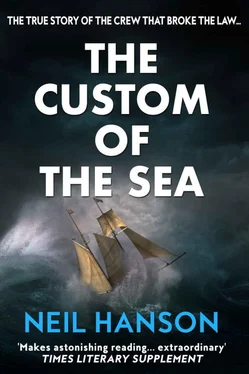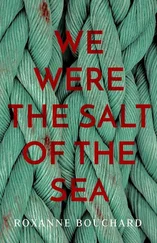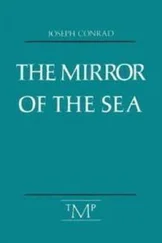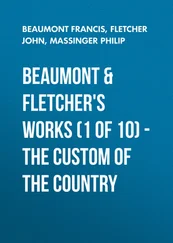Huddleston took silk in 1857, and featured in many great criminal cases at the Old Bailey, conducting a series of memorable defences including that at the murder trial of Edward Pook. Huddleston, ‘annihilated the evidence of one important witness on cross-examination, pointed out the weaknesses of the prosecution and then attacked the Police as severely as if his instructions had been similar to the time-honoured: No case; abuse the opposing attorney.’
He also defended Cuffy, one of the Chartists, prosecuted the Countess of Derwentwater, secured the release of Mercy Catherine Newton on her third trial for matricide, was junior to Sir Alexander Cockburn in the prosecution of Dr Palmer for ‘wholesale poisoning at Rugeley, and vindicated the character of Mrs Firebrace in the court for matrimonial cases’.
Huddleston also harboured political ambitions, and stood as a Conservative candidate — unsuccessfully at Worcester, Shrewsbury and twice at Kidderminster, before finally winning a seat at Canterbury in 1865. He lost it at the general election of 1868, and made a further unsuccessful attempt on Norwich in 1870.
He succeeded there by forty-seven votes in 1874, greatly helped by his recent marriage to Lady Diana de Vere Beauclerk, sister of the Duke of St Albans. His new wife was well known in Norwich and she and her mother, the Duchess of St Albans, campaigned hard on his behalf.
They had been married at All Saints, Knightsbridge, by Bishop Wilberforce, a notorious snob who characteristically forgot to include in his diary the name of the low-born bridegroom: ‘December 18th, to All Saints, Knightsbridge, to marry Lady Di. Back into centre, Bar Committee.’
In February of the following year Huddleston gave up his political ambitions to become a judge in the Court of Common Pleas and was knighted that May. He was transferred to the Court of Exchequer on the death of Mr Baron Pigott, automatically receiving the honorific Baron of the Exchequer, a title that went back to a period before the days of professional judges when the barons of the realm heard cases in the Court of the King. Huddleston was the last to be created before the Court of Exchequer was abolished and delighted in calling himself ‘the Last of the Barons’.
He always insisted on having his courtroom, ‘heated and protected from currents of air until the atmosphere was oppressive to the verge of endurance, and proved what is called a strong judge, taking a view of his own and almost invariably leading the jury to the same opinion’.
Age and success had not blunted the edge of Huddleston’s ambition and, though some of his peers regarded him as insufficiently dedicated to the law to merit consideration as a future Lord Chief Justice, the chance to preside over a great leading case offered him an opportunity to advance his claims.
His first task was to persuade the grand jury in Exeter to arraign Tom and Stephens for trial. Grand jurymen were not the twelve good men and true who heard criminal trials. They were gentlemen ‘of the best figure in the county’, and their meetings were as much social as judicial occasions, with luncheons and even a ball punctuating their deliberations.
They rarely resisted the recommendations of the judge at the assizes but Huddleston was anxious to remove even that possibility. After all, the grand jury in the US versus Holmes case in Philadelphia had thrown out an indictment of murder and replaced it with one of manslaughter. If the Exeter grand jury had rejected the indictment or substituted the lesser charge of manslaughter, the chance to establish a leading case, and with it Huddleston’s hopes of further advancement, would have been lost.
When the grand jury convened on Monday, 3 November, Huddleston first led them through the indictments for the other trials to be heard that week. Following his advice, they rejected an indictment in a case of rape and one of manslaughter, but defied him by also rejecting an indictment against the mother of two murdered children. The father was to be convicted and sentenced to death on the day before Tom and Stephens stood trial.
When he turned to the case of the Mignonette , Huddleston did not allow either the prosecution or defence counsel to address the grand jury. Instead he gave a magisterial lecture outlining the ‘facts’ of the case. These included the assertion that Brooks had not only taken no part in the killing but had ‘sternly dissented from it’.
Having established the credentials of the prosecution’s chief witness, the baron then gave a formal ruling on the relevant law. He cited such legal authorities as there were and rejected out of hand the precedents in other courts including US versus Holmes, which a barrister, ‘Peluca’, had cited in a letter to the Telegraph as justification for the actions of Dudley and Stephens.
Huddleston also made a brusque dismissal of the possible defences of self-defence and necessity. His closing remarks left the grand jury with no room for doubt about what was required of them. ‘It is impossible to say that the act of Dudley and Stephens was an act of self-defence. Parker, at the bottom of the boat, was not endangering their lives by any act of his; the boat would hold them all, and the motive for killing him was not for the purpose of lightening the boat but for the purpose of eating him, which they could do when dead, but not while living. What really imperilled their lives was not the presence of Parker, but the absence of food.’
His reference to ‘lightening the boat’, was a nod to the US versus Holmes case, no doubt in the hope of swaying the grand jury against a similar substitution of a manslaughter indictment, but it seemed to imply that drowning someone to save yourself from drowning was somehow less of a crime than eating someone to save yourself from starving.
To rule on the facts of a case that had not been tested in evidence was unprecedented. Huddleston’s prior ruling effectively made the legal opinion of counsel for the defence irrelevant: whatever arguments he advanced, the judge had already reached his decision. His actions were within the letter of the English law — in which the judge is presumed to know the law, whereas the counsel’s job is merely to remind him of it — but they were outside its spirit. At best it was highly irregular, at worst a flagrant abuse of the due process.
The grand jury obliged him by ‘finding a true bill’ on the indictment, but Huddleston had next to convince the trial jury. He had already laid the groundwork. His exposition of the law had been printed in the local press, and the men who were to form the jury for the criminal trial were therefore made aware of the judge’s opinion that the defendants were guilty of murder before the criminal trial had even begun.
Of course, it was by no means certain that they would agree with him. There was a property qualification for jury service, but jury members were rather less socially elevated than grand jurors and often of a much more independent bent. One in five of all murder trials at the time resulted in an acquittal. In another three-fifths the accused was convicted on the lesser charge of manslaughter or found insane. In less than 20 per cent of cases was the sentence of death passed and, through the exercise of the royal prerogative of mercy, in only half of those was it actually carried out. In 1884, for example, a year when a higher proportion than usual were executed, 192 people faced charges of murder, but only fifteen met their end on the rope.
Jury verdicts had to be unanimous. Even if Huddleston’s power of argument and force of personality was enough to sway eleven of the twelve jurors, a single member of the jury obstinately refusing to convict would force a retrial.
The widespread popular sympathy for Tom and Stephens and the impending arrival in Exeter of a large number of character witnesses for them also made Huddleston well aware of the risk of a conviction on the minor charge of manslaughter or even an acquittal. Instead of outlawing the custom of the sea, such a verdict would have legitimized it. His imaginative solution was to try to persuade the jury not to reach a verdict at all.
Читать дальше











